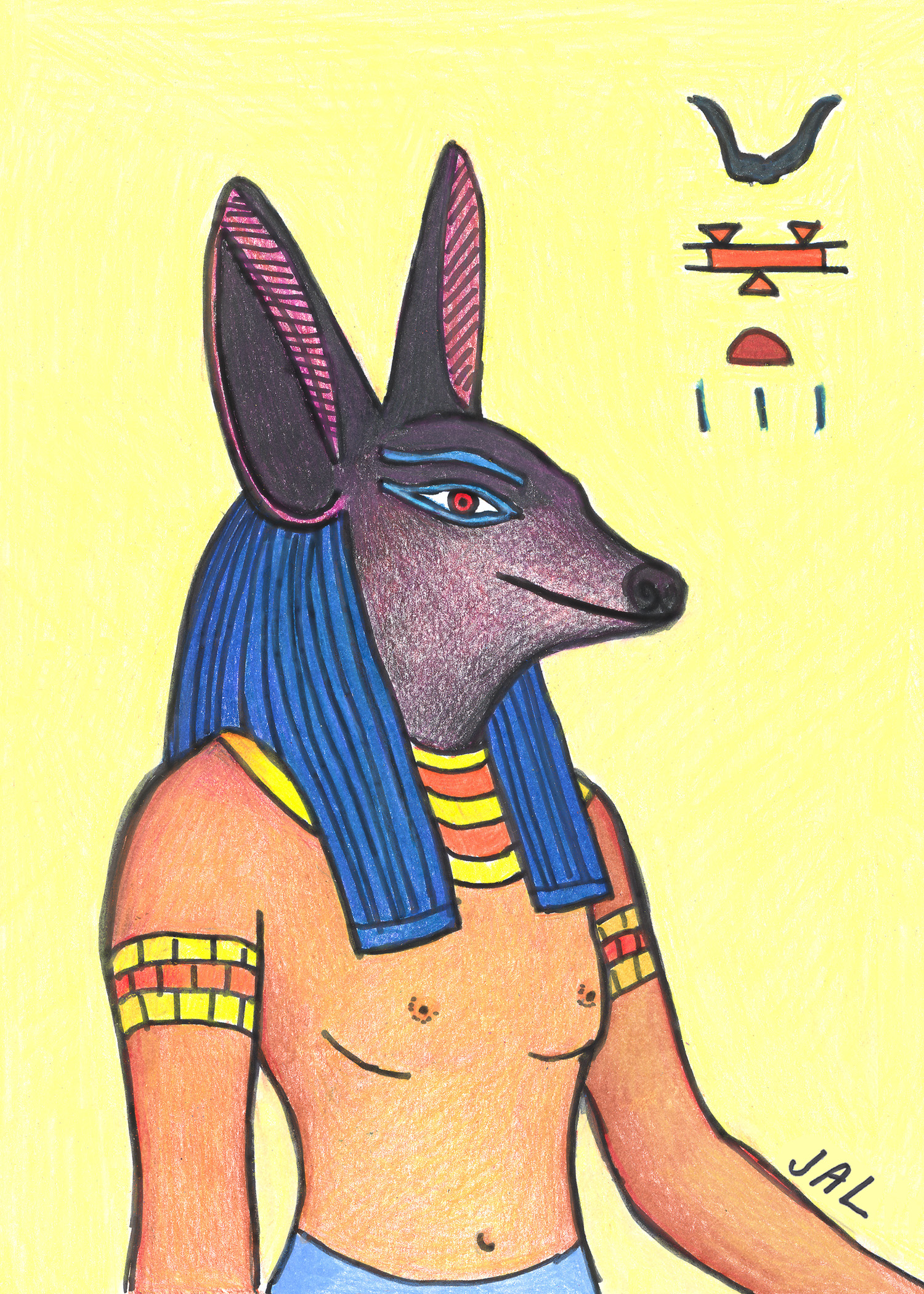
Ink pen and colored pencil on acid free paper, 17.8 x 25.3 cm (7 x 10 in.), © JAL, August 2014
 Ink pen and colored pencil on acid free paper, 17.8 x 25.3 cm (7 x 10 in.), © JAL, August 2014 |
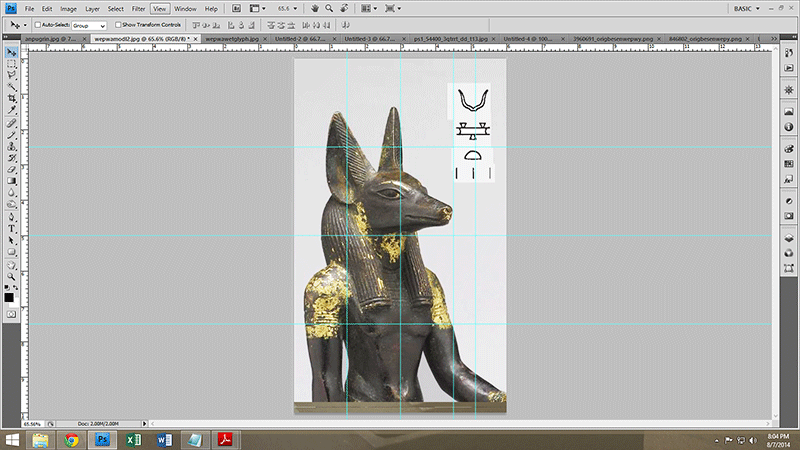
I got inspired by a statue at the Walters museum. Okay, the statue is of Anubis (Yinepu), but someone knowledgeable thought the two cobras suggested Wepwawet. But a zoom in on the glyphs reveals it's labeled Anubis. Quite often, the images of two different deities may be identical, and only the glyphs reveal, for instance, whether it's Hathor (Hethert) or Isis (Aset).
For the glyphs, I consulted various sources, including Per-Sabu's photos of various images of Wepwawet. There's some variance to the glyphs used, but I went with the ones in George Hart's "Egyptian Gods", and the example of vertical placement on the cartonnage of Nespanetjernpare at the Brooklyn Museum as captured at Per Sabu.
How to color Wepwawet? I wondered, should I go grey or brown? Then I thought to check a colorful source, KV 57, Horemheb's tomb. A zoom reveals the black headed jackal deity is Anubis (Anpu), but it's the glyphs that tell you that. Anyway, black face, reddish body and bluish hair, that's what I went with. The jackal headed "Soul of Nekhen" in KV 16 has similar coloring.
|
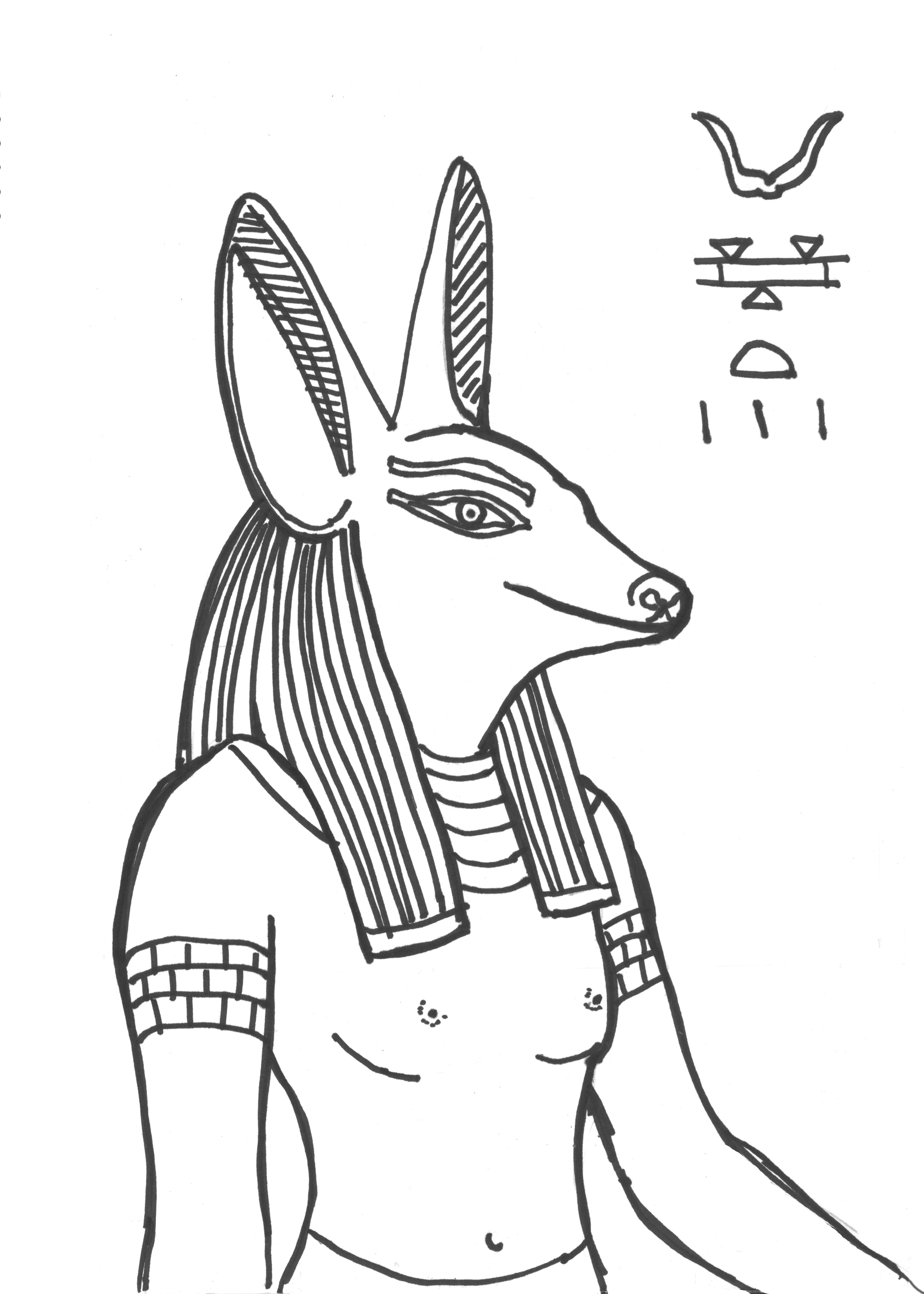 Should you want to color it, the line drawing is available in pdf |
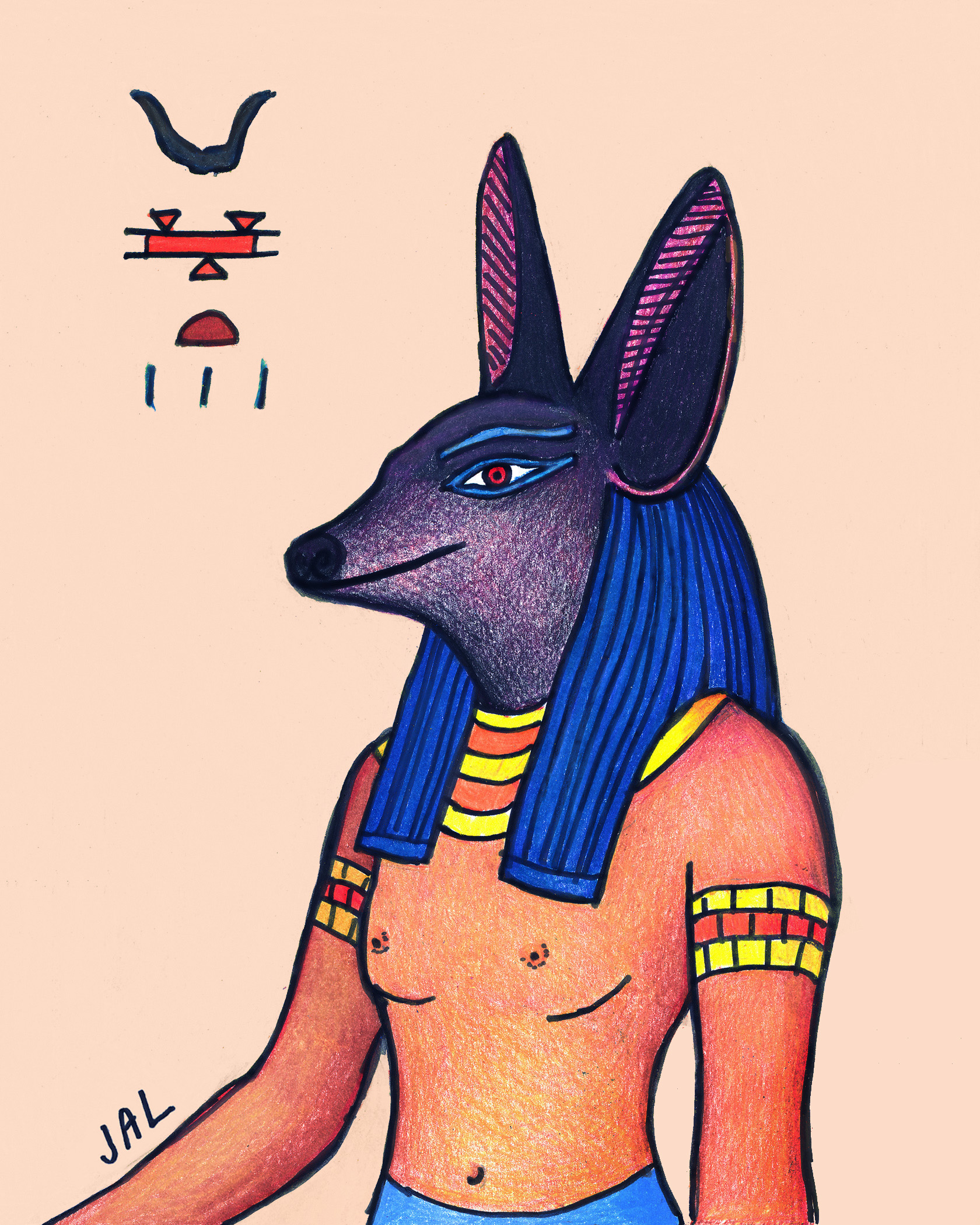
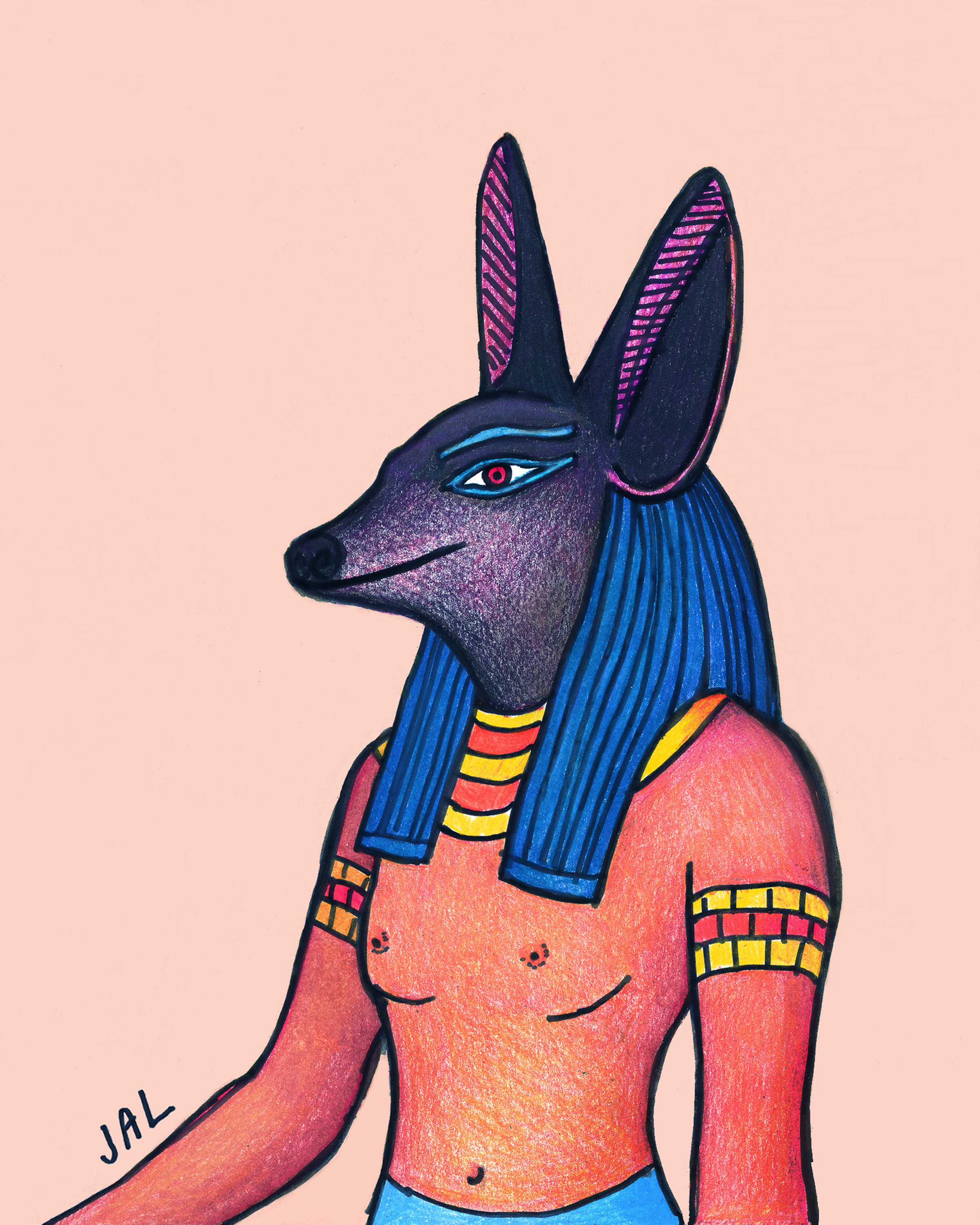
More sunset coloring in a version that could be for either Wepwawet or Yinepu (Anubis), March 1, 2021
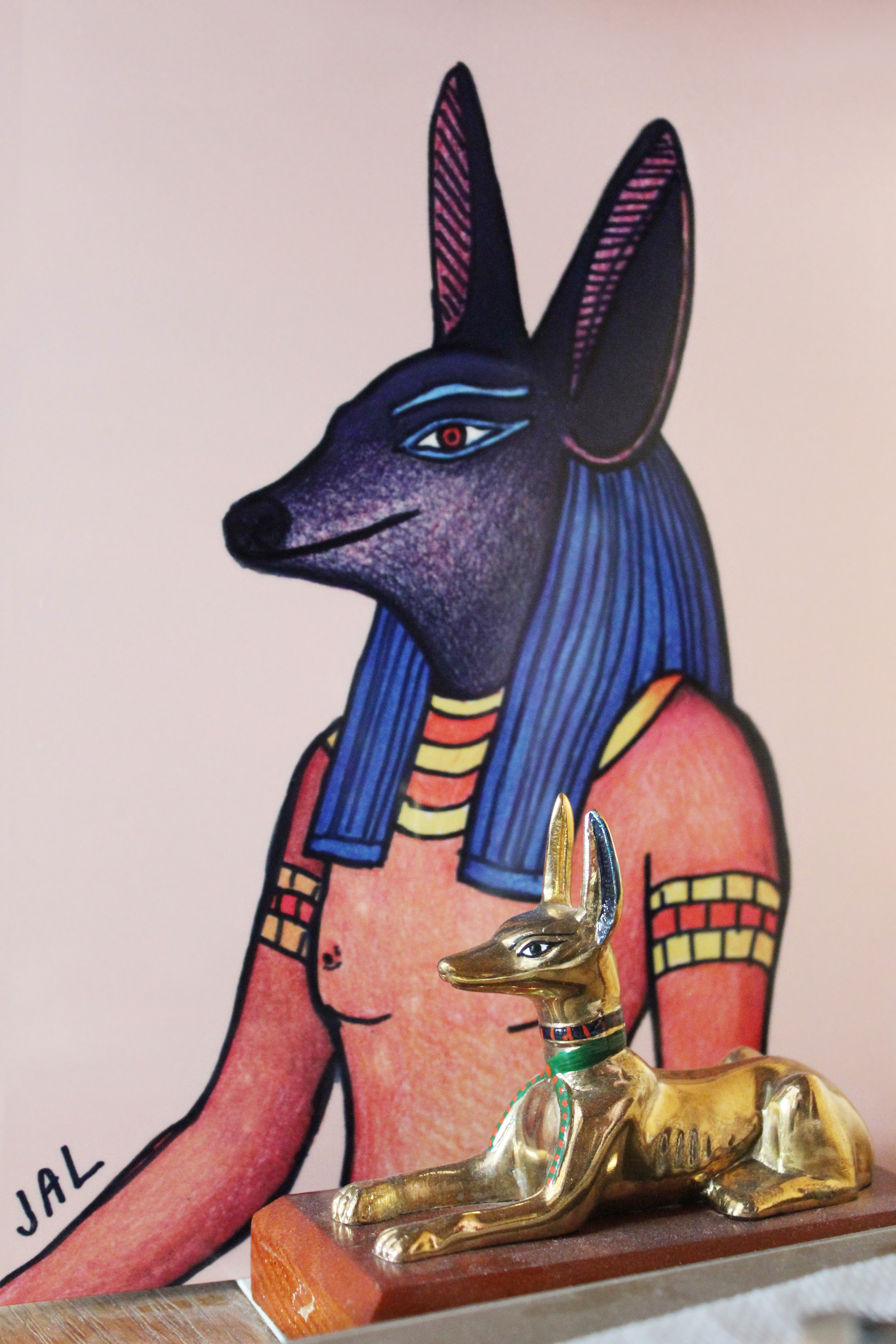
And there he is, in a metal print, with a statue of Yinepu (Anubis)
He grins at me, with or without hieroglyphs, Wepwawet has claimed this drawing!